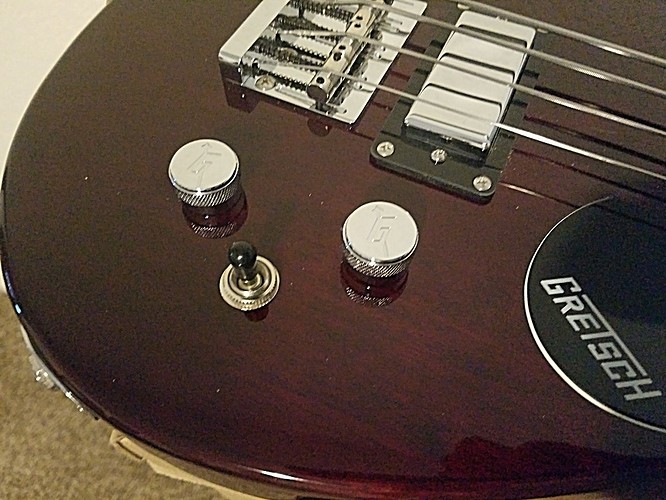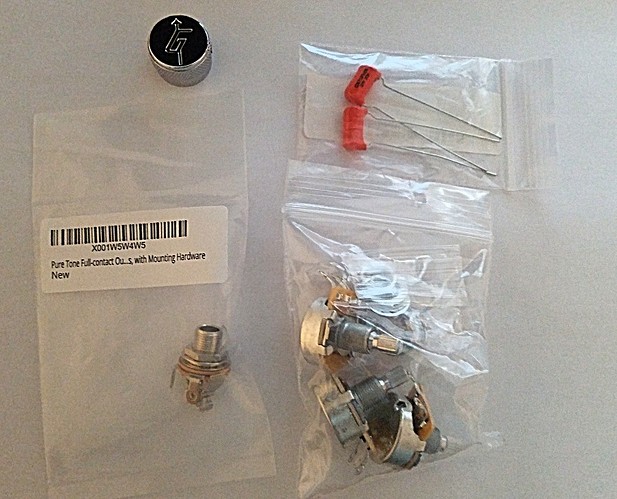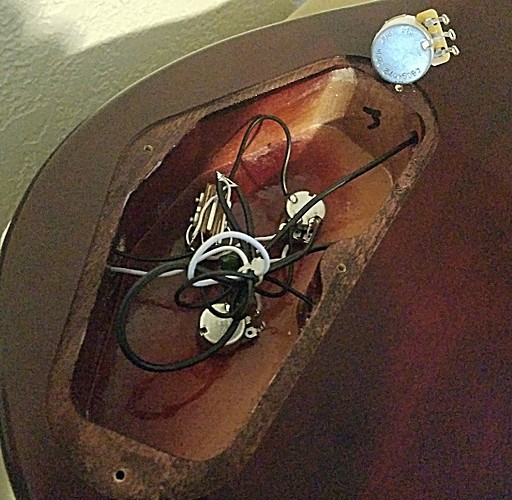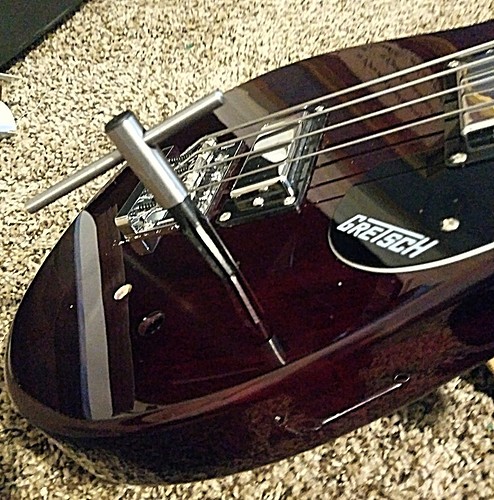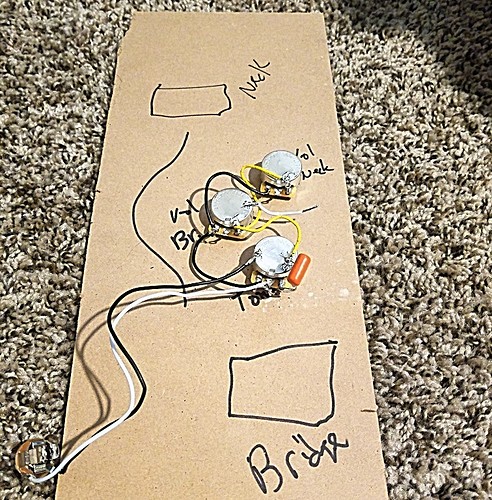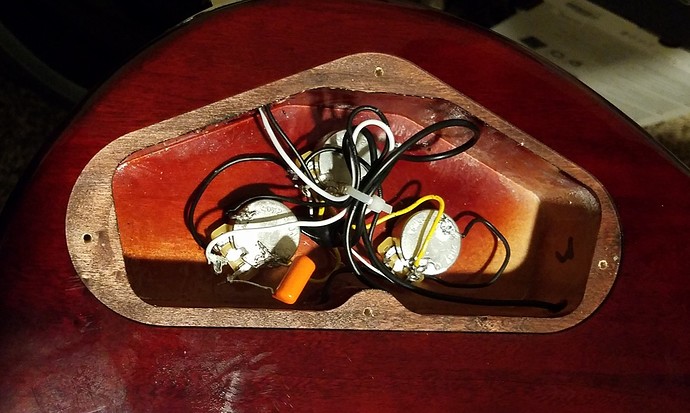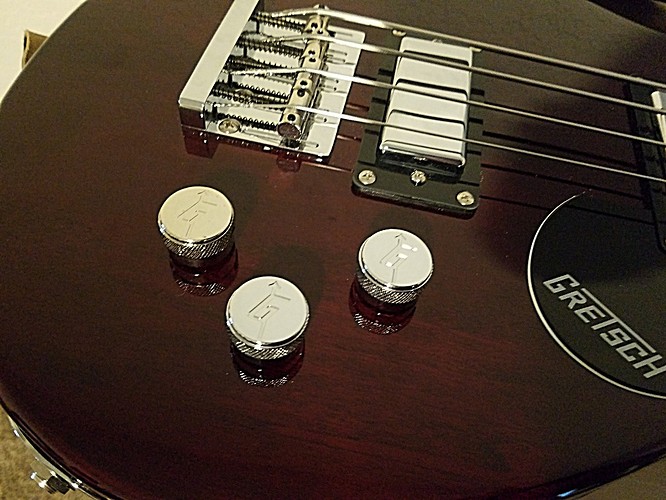I’ve had a Gretsch Junior Jet II G2220 short scale bass for several months and like it a lot. However, I was less than thrilled with the control layout of single volume and tone and a selector switch (bridge, neck or both).
I decided to do something about it.
This would give me a volume for each pickup and a master tone control - like a Jazz or PJ bass. Since the Gretsch has “mini humbucker” pickups, I went with 500K pots and a .022 uf cap. I also decided to upgrade the output jack to a Pure Tone full contact jack. Genuine Gretsch knobs are readily available online.
When I popped the cover off I realized that the CTS pots would be a significant upgrade over the cheesy little mini-pots I found. I guess that corners must be cut somewhere on a $300 bass.
As can be seen above, the pots are really tiny compared to a CTS pot (which I included for reference). The good news is that there is plenty of room in the cavity for the larger pots.
This was the scary part - the holes needed to be enlarged a bit for the new pots, and unlike other basses with the controls in the pickguard or a metal plate, the holes are right in the body.
If there is one takeaway from this post this is it. Do NOT try to enlarge the holes with a drill; use a tapered reamer ($10 from Amazon) instead. Otherwise you risk chipping the finish around the hole.
I temporarily mounted the pots in a piece of fiberboard to hold them in place while I did the wiring.
I wired it just like a jazz base, for which there are a gazillion wiring diagrams available online.
I used a 25 watt soldering iron I had on hand which was barely adequate for the job. It was fine for soldering wires together but had difficulty attaching the ground wires to the pots. If I ever do this again I’ll use at least a 40 watt iron.
All wired and tucked in! As can be seen, there was plenty of room.
All done, and everything works as expected. Now I can get the tone I like by turning the neck pickup volume most of the way up, and turning the bridge pickup up just enough to give it a little bite.
